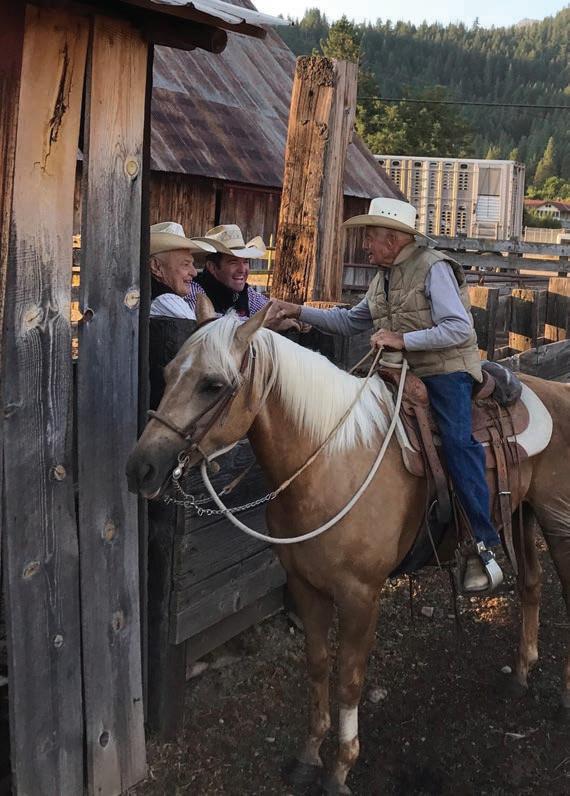




































PRESIDENT Kim Burton Brackett (Kimberly) 208-308-1952
PRESIDENT-ELECT
Jerry Wroten (Wilder) 208-831-7339
VICE PRESIDENT
Spencer Black (Almo) 208-647-8130
PAST PRESIDENT
Mark Pratt ...........(Blackfoot) 208-681-6597
TREASURER
Cody Hendrix (Rigby) 208-360-9693
FEEDER COUNCIL CHAIR
Shawna Gill (Grandview) 208-850-9076
PUREBRED COUNCIL CHAIR
Val Carter (Pingree) 208-390-4811
COW-CALF COUNCIL CHAIR
Brayden Eliason (Holbrook) 208-705-2541
CATTLEWOMEN COUNCIL CHAIR
Maggie Malson (Parma) 208-739-2265
DISTRICT 1 REPRESENTATIVES
Eric Wittman (Lapwai) 208-790-5344
Casey Scott...............(Clarkston) 208-431-3024
DISTRICT 2 REPRESENTATIVES
Lori Ireland (Mountain Home) 208-866-0112
Royce Schwenkfelder (Cambridge) 208-550-2200
DISTRICT 3 REPRESENTATIVES
Eugene Matthews (Oakley) 208-431-3260
Jesse Human (Jerome) 208-358-1277
DISTRICT 4 REPRESENTATIVES
Ryan Steele (Idaho Falls) 208-390-5765
Chris Kirby (Salmon) 208-223-2258
DISTRICT 5 REPRESENTATIVES
Roscoe Lake (Blackfoot) 208-604-3650
Arnold Callison (Blackfoot) 208-681-8441
ALLIED INDUSTRY REPRESENTATIVE
Kody Dee Williams.....(Fruitland) 509-948-6430
DIRECTORS AT LARGE
Robert Oxarango (Emmett) 208-431-0777
Adrian Meyer (Grand View) 208-509-1892
CATTLEWOMEN BOARD REPRESENTATIVE
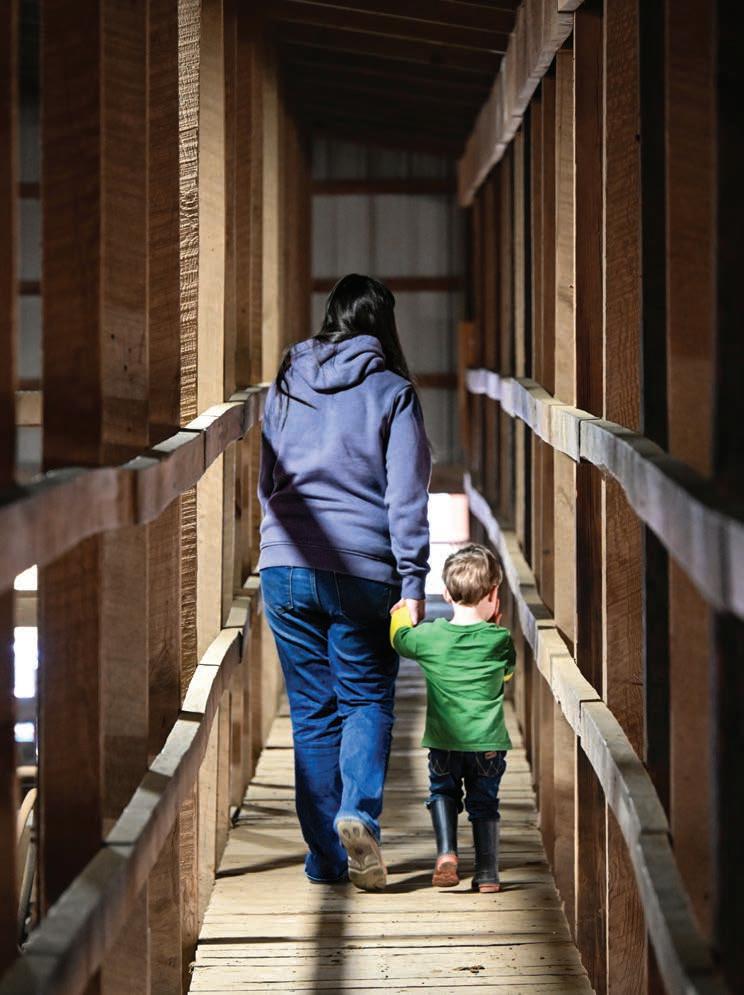
Tay Brackett (Filer) 208-866-4967
EXECUTIVE VICE PRESIDENT
Cameron Mulrony cameron@idahocattle.org
NATURAL RESOURCES POLICY DIRECTOR
Karen Williams karen@idahocattle.org
ADMINISTRATIVE ASSISTANT
Michelle Johnson michelle@idahocattle.org
DIR. OF MEMBERSHIP & INDUSTRY ENGAGEMENT
Morgan Lutgen morgan@idahocattle.org
Contact Idaho Cattle Association:
Mailing address: P.O. Box 15397, Boise, ID 83715
Location: 2120 Airport Way, Boise, ID 83705
Phone: 208-343-1615
For advertising sales, contact: idahocattlepublications@gmail.com
The Line Rider is the official publication of the Idaho Cattle Association. It is published 10 times each year, in January, February, March, April/May, June, July/August, September, October, November and December.
You know how to raise them. We know how to sell them. We’ve been working for cattlemen like you since 1987.
Consign in an upcoming video auction to take advantage of current market conditions, regardless of your location. Your cattle are sold by world champion auctioneers to a nationwide buyer base of more than 6,500 active buyers.

True price discovery - that’s The Superior Way.
JOIN
CORN BELT CLASSIC JUNE 7 & 8
S. Sioux City, Nebraska
Consignment Deadline - May. 23
TALLGRASS VIDEO AUCTION JUNE 15
Emporia, Kansas
Consignment Deadline - June 12
WEEK IN THE ROCKIES
Steamboat Springs, Colorado
Consignment Deadline - June 21
VIDEO ROYALE
Winnemucca, Nevada
Consignment Deadline - July 14
BIG HORN CLASSIC
Sheridan, Wyoming
Consignment Deadline - Aug. 4
JULY 10-14
JULY 31- AUG. 4
AUG. 21-25
SUPERIOR LIVESTOCK AUCTION
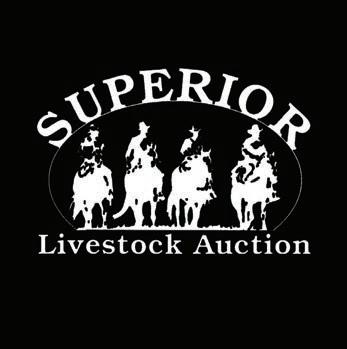
(855) 868-6842 | 2700 AIRPORT WAY, BOISE, ID 83705
SUPERIORLIVESTOCK.COM | INFO@SUPERIORLIVESTOCK.COM
Grassroots. We use that term often in reference to the ICA. Yet sometimes we have to remind ourselves how valuable a grassroots process truly is and how much effort it requires from producers around our state. According to my dictionary, grassroots organizations use collective action from the local level to affect change at the state, regional, or national level. There is an inherent expectation of effort and commitment from membership that is specific to grassroots organizations.
Collective action at the local level makes up the foundation of this natural progression. We have several active local cattle associations in Idaho and I encourage you to attend your next local meeting! Or, if your local group has lapsed over recent years, step up and help reinvigorate it. Invite your neighbors and be sure to include the new and the young producers in your area to participate. Engaged and active locals indicate a healthy grassroots organization.
BY KIM BURTON BRACKETT ICA President
to participate in one of our committees! ICA committees meet quarterly (twice virtually and twice in-person during the year) to discuss updates on relevant matters and to hear from committee members about local concerns. These committees then bring forward resolutions at annual convention for consideration by membership.
Finally, as an ICA member, it’s important that you (the individual) attend and vote during the membership meeting at Annual Convention on the resolutions that guide our association’s work. Let’s have a good healthy discussion on the issue and let our membership vote. That participation and robust conversation is what strengthens our association. ICA leadership and staff stand firm on that established policy throughout the year, and decisions are firmly rooted in the resolutions that our membership has passed. If we have policy in opposition to a specific issue, we stay in opposition regardless of the popularity of that topic. Conversely, if we do not have policy on a stated topic, we typically remain neutral. (Exceptions are made when a new issue arises; in those situations, the Executive Committee or Board of Directors provides interim guidance.)
You may wonder what it looks like for the local leaders to contribute at the state level. In the simplest form, local associations may submit policy resolutions to ICA for consideration at our annual meeting. If there is a concern or issue that is relevant to your local cattle association, check with your District’s board representatives to find out if ICA has existing policy. If so, does it address the issue or would your local membership like to consider amending that policy? If there is not existing policy, draft a resolution and submit it to ICA 45 days prior to annual convention. At the state level, ICA members are encouraged
Across the United States, association involvement is on the decline. One reason is the amount of time and commitment required by members in grassroots associations. It takes time to participate at a local level, to submit resolutions and follow through on the policy process at a state level. Time is a precious resource and not every producer chooses to spend it engaged in cattle association work. But the question is, who else will volunteer to advocate for policy that is in the best interest of cattle producers across Idaho, if not us? I am reminded of a quote from Ivan Scheier, a leading thinker on volunteerism and association work: “Volunteering is doing more than you have to because you want to, for a cause you consider good.”
Participation & robust conversation is what strengthens our association.

Expediting the process, speeding things up, adapting to the situation, changing in the blink of an eye…
These are all things that we, as people in agriculture, do daily. Now, I am not saying that individuals in other trades don’t have to make adaptations and adjustments, but in my (albeit) limited work experience an alternatively non-ag setting, it’s my opinion that the rate of this is much lower.
BY CAMERON MULRONY ICA Executive Vice President
ence). Although you can “light the board” with horses of differing speed ratings, the head-to-head result shows the winner is always faster.
In college, I worked in a shipping warehouse and small manufacturing area. We did not see many changes from day to day- the orders came down, you picked the items from the warehouse and moved on to the next order. If you were packaging the orders, you rechecked the items, fit them in a box, placed a pre-printed label on the item and set them on the dock for distribution. The adaptations and changes mostly appeared in 2 main ways: either inventory was incorrect in the computer system or items were not located where we had intended them to be for picking. On the other end, these needed adjustments occurred if there was some type of shipping error or missed delivery deadline. Although I am sure there were a variety of challenges at the upper end of the management and sales staff, the adaptation or need for quick changes were relatively small in comparison.
This brings me to my topic of the day. The speed of Government vs the speed of Commerce. I think it is safe to say that they do not possess the same speed index (a little Quarter Horse Racing refer-
I recently spoke at a meeting in Boise where some of the attendees work in stream restoration across the west. Unlike most of the audiences, it appeared many of them were not operating their own businesses, rather, looking to implement projects that could benefit our businesses as well as provide stream benefits. To kick off the discussion, I asked the group how many of them strive to live in the same home and carry the same job 10 years into the future? 20yrs? 30? 50? The point being that this longevity is the goal of many of our family operations- even 50 years from today, they are hopeful that their work, their ranch, their legacy will live on with the next generation who will be actively managing the day to day long after they are gone. The consistency of an agency employee, or any employee, is much shorter in today’s work force. In addition, we as operators set out to do a job each day, and although our day may change quickly, we must make decisions and live with consequences. Our “speed ratings” don’t always match, so this too can be a roadblock when developing partnership projects.
So how can we adapt policy and procedures to allow our speed ratings to compete? How can we affect the conditions of the race?
This question puts us in ICA’s arena of expertise! The connections, resources and influence from ICA relationships can help start the ball rolling toward adjustments and adaptations. For example, what change could be made that would minimize restriction placed on agency at a local level for those who want to get the job done? First we have to identify and agree that we can create a
First, we have to identify and agree that we can create a change.
Evaluating how others make changes & adjustments
change. The next step is to go through the process to create change and the last is to utilize the change we have advocated to preserve, promote, or protect our industry.

My ask of you, as an ICA member, is to make a list of roadblocks that halted progress and send them to our staff or leadership. This way we can begin the process (sending to a committee, etc) in order to fill the pipeline with items where we want to see change.
The processes are the slowest part of the adjustments; however, they work to strengthen the voice of individual memberships and the association. I, personally, just have to learn to be patient and I would guess that is a lesson that is as hard on many of you reading, that it is on me. So make a list and let’s look at some of the issues that we can work on to expedite the situation.
…ramblings complete! Long Live Cowboys~
After a four-year hiatus due to overlong COVID-related closures, leadership and staff of the Idaho Cattle Association and Idaho Public Lands Council returned to Washington, D.C. last month. Our mission was to bring our top priorities and concerns to the forefront of key agency leaders’ minds and seek for solutions to issues plaguing Idaho’s cattle industry. We also participated in industry-wide meetings of the Public Land Council and National Cattlemen’s Beef Association.

Given the flurry of regulatory activity coming out
BY KAREN WILLIAMS ICA Natural Resources Policy Director
of Washington recently, we found no shortage of issues to talk about. As an industry, I would say we survived the first half of the Biden Administration’s term relatively unscathed, but agency leadership seems to be making up for lost time during the second half. Top on the list of concerns is BLM’s proposed Conservation and Landscape Health Rule. If you have read my recent article, or been around me the past month, you know that this is an issue that keeps me up at night. The good news is that word of its many faults is spreading and those across the political spectrum and multiple use landscape have taken note. There is a fairly widespread effort underway to limit or halt the rule’s implementation, but we will need your help in continuing to bang the drum of opposition. Refer to page 12 for more information about how you can help oppose this rule by taking action.
In addition to this concerning rule, there are a couple of other key looming issues coming out of the Department of Interior. For this reason, we scheduled a meeting with BLM Director Tracy Stone-Manning while in D.C. In addition to underscoring our grave concerns with the conservation rule, we also discussed the forthcoming BLM sage grouse rule, grazing regulations revisions, and utility-scale renewable energy development on public lands, including, of course, the Lava Ridge Wind Project. Be prepared for us to be pressing you into service over the next several months as these various rules come out. We are going to need a lot of producer involvement in attending public meetings and in providing public comment. The draft sage grouse rule is supposed to be released for public review and comment in August. There is growing concern about how the new plan will look as a recently released skeleton draft of alternatives shows that the BLM is considering an alternative
where grazing would not be allowed in sage grouse habitat. The state of Idaho’s collaborative effort is reconvening, under the leadership of the Office of Species Conservation, to fine-tune the state-specific plan which we will request the BLM to utilize. Our key message to Director Stone-Manning on this issue was to incorporate the state’s plan as the preferred alternative for managing sage grouse in Idaho.



In our meeting with the Director, she also revealed that the updates to the BLM’s grazing regulations will also be released in late summer. This is both welcome and concerning news all at once. Welcome because grazing regulations updates are much needed and are something we have asked for and worked toward for several years. Concerning because the Administration tipped their hand with the conservation rule and there is room for worry that rather than improve efficiencies and create flexibilities in management of grazing permits, the revisions could prove to be more problematic than what we are currently living with.


Across the National Mall from Department of Interior, we also spent some time within the halls of the U.S. Department of Agriculture (USDA). We took the opportunity to meet with two USDA Under Secretaries, along with Forest Service and Farm Service Agency leadership. In our visit with Dr. Homer Wilkes, USDA Under Secretary for Natural Resources, we focused on Forest Service-related issues. Dr. Wilkes hails from the south and so western Forest Service rangeland issues are new to him. In addition to delivering a general “grazing is good” message, we also spent some time talking about wildfires and the value of Rangeland Fire Protection Associations. He had particular interest in new technologies being developed for virtual fences for livestock which we discussed as a potential small-scale tool for managing livestock in certain situations, such as in the case of returning to grazing allotments within the 2022’s largest wildfire, the Moose Fire in Salmon.
In our meeting with USDA Under Secretary for Farm Production and Conservation, Robert Bonnie, we focused on issues related to the agencies under his jurisdiction including the Farm Service Agency (FSA) and Natural Resources Conservation Service. We reaffirmed the fact that, with the Administration’s plans to conserve 30% of America’s lands and waters by 2030, there could be no greater network of partners across the country than what could be found in the cattle industry, and we made sure he understood that in the climate change dialogue, cattle and grazing are part of the solution, not the problem. We found him receptive to our statements. We also discussed more localized staffing needs within both agencies in Idaho as well as concerns and ideas to improve various Farm Bill programs and administration. In a related meeting with FSA Administrator Zach Ducheneaux, we reinforced the staffing issues in Idaho and the need for leadership at the state level. We also discussed ways to improve farm loan programs operated by FSA.
Our visit to D.C. was capped off with meetings with each member of our congressional delegation. After meeting with agencies currently involved in creating challenges for our industry, it was refreshing to sit down with some friendly faces. All four members of our congressional delegation are on our side and are willing and ready to fight some battles for us. It is good for ICA to sit down with them periodically to remind them of our key issues of concern and to discuss ways the Congress can help to either halt the bad ideas coming out of the regulatory agencies or create legislation to improve the business environment for Idaho’s cattle producers.
Our time in our nation’s capital was both well spent and necessary in informing key decision makers of their actions’ impact on the both livelihoods of Idaho’s cattle producers and on Idaho’s landscape. As always, we will continue to forge ahead in representing Idaho cattlemen and women on issues of importance and will continue to lead the charge against any effort that could undermine your ability to raise cattle and pursue your way of life.



The BLM Conservation and Landscape Health rule, released for public review in April, poses significant threats to multiple use of public land and has the potential to utterly disrupt and dismantle grazing on BLM lands. The proposed rule seeks to accomplish three main things, two of which pose significant threats to livestock grazing on BLM lands.
1. The rule would apply the fundamentals of land health and related standards and guidelines to all BLMmanaged public lands and uses. This is the only acceptable aspect of the rule. For too long, grazing has borne the blame for the impact of other users and impacts on public land including recreation, wildlife, drought, wildfire, and more. This section will level the playing field and require all users across all BLM lands to adhere to the land -health standards and which should, in theory, remove unrealistic expectations currently placed solely on grazing permittees.
2. The rule proposes to establish conservation leases on federal land . It elevates conservation as a use on par with other with other uses of the public lands under the Federal Land Policy and Management Act’s (FLPMA). The rule allows the general public to determine where the leases should be applied. This language sets the stage for opponents of public lands grazing to remove grazing in the name of conservation.
3. The rule would expand the use and designation of Areas of Critical Environmental Concern (ACECs). It would “give priority to the designation and protection of ACECs” and “emphasize ACECs as the principal designation for protecting important natural, cultural, and scenic resources.” This portion of the rule is, in part, in response to the Biden administration’s call for more wildlife habitat connectivity. The use of ACEC designations is a favorite tool of anti -grazing activists to restrict grazing and related management tools.
Please submit comments opposing this rule. You can use these points as the basis for your comments:
1. The rule violates Congressional direction for multiple use under FLPMA by adding a new “use” without express Congressional authorization.
2. The proposed rule does not put this new “use” “on par with other uses”, but gives conservation leases the power to eliminate multiple use on federal lands.
3. BLM’s inappropriately narrow definition for “conservation” creates conflicts with other agencies, and other BLM interpretations, cementing the message that BLM does not believe that conservation and multiple use are compatible.
4. BLM inaccurately asserts FLPMA directs the agency to “promote” the use of restrictive ACEC designations, despite purported commitments to rangeland objectives .
For a more detailed talking points sheet or a copy of ICA’s full comments, send an email to karen@idahocattle.org
By mail:
Online: https://www.regulations.gov
Dept. of the Interior, Director (630) Bureau of Land Management 1849 C St. NW, Room 5646 Washington, DC 20240

For the visionary land stewards of the Western US Rangeland comes HighNoon™ herbicide, the foundation product for annual grass, broadleaf and brush control for Western rangelands.
HighNoon provides extended control of 140+ weeds while maintaining native grass safety. HighNoon gives ranchers, county noxious weed directors and vegetation managers working on grazing land, roadsides, utility substations or rights-of-way a weed control option that simplifies the job.
Learn more about how HighNoon can work on your operation at HighNoonHerbicide.com

Here we are almost halfway through 2023, time is flying by! I’d like to introduce myself for those who don’t know me. My name is Kody Dee Williams. I am with Allflex, now part of Merck Animal Health, and am serving on the Idaho Cattle Association (ICA) board of directors as the Allied Industries representative for this year. My husband and I, with our two-year-old in tow, have a row crop farm in Fruitland, Idaho. While our struggles are a little different than those in the cattle industry, we are also doing our best to roll with the punches. We both grew up in agriculture and when we decided to take the big leap and start our own farm, I can tell you we were not expecting the challenges that the last few years have presented. Needless to say, it has been a wild ride!
 BY KODY DEE WILLIAMS Allied Industry Representative
BY KODY DEE WILLIAMS Allied Industry Representative
to ask questions and use your allied partners as resources. Our industry’s associations (such as ICA) and various state programs work hard to make sure that you have all the tools available- make sure that you are using them to your advantage!
In the allied sector we are seeing a lot of changes inside of our respective companies. Not all of us work with delivering product, but those of us that do continue to see struggle with supply chain. I don’t think that problem is going to resolve any time soon, but with good planning we can decrease the hangups. I know that I personally, as an example, have significantly more ability to procure items if I have a buffer of time to put it in motion. Inflation is also a huge hurdle we are all dealing with- I know my grocery bill is driving me crazy! I hate to join in and say this is the “new normal” but unfortunately we don’t see this change on the near horizon. This industry has proven time and again that you are up to the challenge!
While I’m not originally from Idaho, I married an Idahoan. This state and the people that I get to work with are what makes going to work fun. The history of the cattle industry that Idaho has to offer is incredible and the steps that are being taken to preserve it are special. Be that as it may, in a world of constant change the ag community has so many different solutions available. New products, new programs, and new resources are constantly being brought to the table. None of these solutions are a “one size fits all” but maybe for someone’s operation, it’s the key component that may have been missing. I’d urge you
It takes a team to make it all come together and without the right teammates it feels near impossible some days. Let this serve as a gentle reminder that your allied industry partners are all in your corner! As much as representing our various brands and products is part of what we do professionally, we are here to support you in other ways as well. Somedays that may look like an extra set of hands at branding, or maybe it shows up in other ways for you. Relationships are important and the only way our business works is if we do our best to support our customers – and sometimes we can find a way to supply some lunch too! If you have questions for contacts inside the Allied Industries segment, make sure to reach out to the staff and leaders at ICA. Here’s to happy, healthy cattle and the people who raise them!
This industry has proven time and again that you are up to the challenge!





While the sale of livestock is a key component to a livestock auction, there is more to be uncovered about what these businesses do.
When thinking about a livestock auction market, what do you think of? It is likely you imagine the sound of the auctioneer, cattle moving through the ring, farmers and ranchers catching up on the latest news and enjoying homemade foods in the café. While all of those things are true, and part of what makes them an iconic image of the industry, there is much more to what happens under the “roof” of your local livestock auction.


Livestock auctions have created competition and transparency in the marketplace for decades. Their development was a turning point in the industry, giving farmers and ranchers greater access to marketing options and information to benefit their operations. The competition created by bringing multiple buyers and sellers together drives what is referred to as “true price discovery” and pushes the value of an animal to true market value and often higher. That’s something that alternative marketing options can’t promise with only one buyer at the other end of the transaction.
The relationship and communication between livestock auction operators and their producers are key in making sound marketing decisions. To help in daily operations, farmers and ranchers can seek additional services with livestock auctions, such as value-added programs, educational seminars and readily available market expertise. Many auction owners visit their customers’ operations to discuss the best opportunities and times to sell, as well as ways to achieve a more market-ready animal. After all, quality and consistency help drive buyers to the seats of an auction and work done outside of sale day by the cattle producer and the auction market helps to ensure a healthy demand.


It is often overlooked that your local livestock auction is also a local

business, taxpayer and employer in their community. A 2023 economic impact study, conducted by the Livestock Marketing Association (LMA), found that livestock auction markets continue to be important for the growth and vitality of rural communities. The study of an average, fixed-facility livestock auction market revealed that the market provides approximately $2 million in total value-added dollars to its local community. Key findings also revealed that the market studied on average provides 17 jobs, generating $888,000 in labor income to the community’s economy.
“Livestock auction markets today remain critical in helping our rural communities continue to thrive,” said Kristen Parman, LMA Vice President of Membership Services. “They generate a competitive sale environment, which results in cash for local livestock producers. That cash equals dollars spent in town and investments back into their businesses and operations.”
As a source of economic opportunity and community morale, it has also been found that livestock auctions continually invest in the health and longevity of their communities. As hosts of local events, ranging from junior livestock sales to fundraisers and cowboy church, to a secure location for resources in times of disaster, livestock auctions are key community resources with readily available facilities – especially in rural America.

The impact extends past the local level when livestock auctions choose to become LMA members. LMA is the national trade association for livestock marketing businesses and represents nearly 85% of regularly selling livestock markets in the U.S., including markets in the state of Idaho.


With their stories and voices at hand, this extends a markets’ reach beyond their local community and puts it on a national scale, connecting them with other livestock markets and operators across the country. Those conversations and connections can also extend to industry leaders and policy makers in our nation’s Capitol.
A healthy livestock auction industry is vital to animal agriculture, livestock producers and rural economies. Every farmer and rancher has a choice when it comes time to market their animals: the choice to take what may appear to be the easy path with direct trade to a buying station, or the choice to put the power of the livestock auction market to work on their behalf. At the end of the day, the investment of commission paid at the auction is the assurance to keep that auction operating and providing the services that livestock producers rely on.
While we can’t predict the future of the industry, there is one thing for certain: livestock auctions have a reach that extends past the walls of their facilities. Not only do they create opportunities for competition, while driving up the value of livestock for their local producers, but they also serve as a hub for information, a tool for farmers and ranchers and as LMA members, a voice on issues affecting the entire industry. Livestock auctions will always be an important piece of the beef supply chain, while also continually supporting and ensuring their customers and communities have a hope for a better tomorrow.
Just one buyer means just one price.
We know your passion and we know your business. We’re here to help guarantee competition — Every single time.
Producers Livestock Marketing Association
Jerome, ID
Twin Falls Livestock Commission Company
Twin Falls, ID
Lewiston Livestock Market, Inc.
Lewiston, ID
Treasure Valley Livestock
Caldwell, ID
Blackfoot Livestock Auction

Blackfoot, ID
Burley Livestock Auction
Burley, ID
7 Rivers Livestock Commission LLC
Emmett, ID

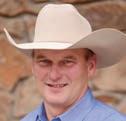
My Dad and I stopped by Costco on our way home from one of his doctor appointments. While we made a quick circle in the store, we went by the meat case and perused the selection and the prices. Expecting this old rancher to be shocked by the $19.95/ pound for a rib steak, I was the one surprised with his response “It’s Still a Good Deal”! He always said beef should be expensive, like any high-end product with a good story to tell.
As I finish my 6 year term on the Idaho Beef Council and 2 year term as chairman, I reflect on the many hours of meetings I have participated in, miles traveled, and phone calls made and received. There were nervous speeches, tough decisions, and awkward conversations. And now I can say “It’s A Good Deal”. Leadership within the beef industry is a good deal. The folks I have had the opportunity
to work with over my tenure are the best humans on the planet. T.K. Kuwahara, CEO of the Idaho Beef Council, works tirelessly to maximize the impact of the check-off to improve demand for beef in Idaho and the northwest. Shari Gulledge, Finance & Operations Director, keeps a watchful eye on the finances and has improved and documented processes and procedures to ensure compliance and continuity moving forward. The industry has been well served by these two individuals.
Lee Bradshaw will be moving on this year as well, and I want to express my appreciation for his wise council and sense of humor. After 30+ years of friendship, I am not surprised, but nevertheless grateful he was always a phone call away.
The Idaho Beef Council members Ira Brackett (cow/ calf), Steven Taylor (auction), Willie Bokma (dairy), J.W. Wood (feeder), Don Gaalswyk (diary), and Jodie Mink
How leadership and supporting programs work in tandem for the good of beefNOURISH IDAHO SOCIAL MEDIA CAROUSEL AD GARNERED 15.6 MILLION IMPRESSIONS AND DELIVERED AN 86% VIDEO COMPLETION RATE, WELL BEYOND THE 65% INDUSTRY BENCHMARK. CONSUMERS COULD CLICK TO THE IDBEEF.ORG WEBSITE FOR MORE INFORMATION.

Volunteer-leaders are nominated by their respective industry segments and appointed by the Governor of Idaho to guide the Idaho Beef Council. They are responsible for providing the vision, strategic direction, as well as program and fiscal oversight of Idaho beef producers’ checkoff dollars to ensure a positive return on investment.



A special thanks to Bill Lickley and Lee Bradshaw for six years of extraordinary service to the beef industry! As their term ends on June 30, 2023, we recognize and commend their unwavering courage to champion change, and prepare the Idaho Beef Council to meet the challenges of the future.

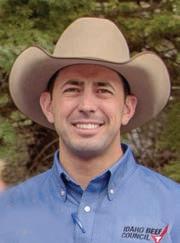
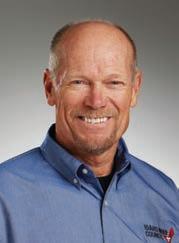

(cow/calf/CattleWomen) will be joined by newly appointed cow/ calf representative Lynn Bachman and feeder representative Bruce Kerner. This crew will continue to serve the Idaho beef industry well. They are committed to maximizing the return on your Checkoff dollars.
The Checkoff is working hard on your behalf. In some ways, Idaho is changing faster than any state in the union. We have one of the fastest growing populations in the country. Our new neighbors’ perception of agriculture, ranching, feeding, and beef are often very different than those of us who grew up here. Likewise, the beef industry has seen more change than any other state in the US. Integrated production and marketing programs have gained traction here. We see Idaho leading the trend of “beef on dairy” production of cross-bred calves replacing straight bred dairy steers in the production cycle. Three new processing plants opened in 22/23 with three very different, but very innovative business models.
This confluence of a changing consumer with a rapidly evolving production environment is both exciting and challenging for the Idaho Beef Council as we tell the story of our industry and work to educate consumers, industry partners, and our producers in order to build demand and provide a product we can all be proud of. Highlighting our efforts to inform the new consumer is the “Nourish Idaho” campaign. We have delivered over 15.6 million impressions to Idaho consumers with facts about who Idaho ranchers are and why they are a benefit to the state and to the landscapes they live and work on. In addition, consumers that have found preparing beef at home to be economical and rewarding once again are looking for ideas on recipes and tips on preparation, which we have provided through connecting them with Beef. It’s What’s For Dinner. in a variety of ways.
Our “one-two” punch of influencers Lance Pekus and Jessie Jarvis has been very effective in telling the Idaho ranching story as well as meeting that consumers’ need for more information about preparing a meal they can both enjoy and successfully execute.

The training we have provided to chefs, meat cutters, and wholesale purveyors has added value to their businesses by helping them add value to beef through their knowledge of the production process, values in the cuts, and new ways to prepare beef that will drive new sales in the state of Idaho. “Explore Idaho” has been a very effective partnership with the University of Idaho to deliver this information and build relationships in our Idaho beef community.

With 96% of the world’s population living outside the U.S., our international work in Japan, South Korea and China is just as important to create long-term demand for Idaho and Pacific Northwest beef in new channels. The work introducing “Idaho Finger Steaks” is an excellent opportunity to create net new business and tell the Idaho Beef Story to different audiences.
I am very proud of the work done by the Idaho Beef Council to reinvigorate the Beef Quality Assurance program in Idaho. Through a lot of hard work and cooperation throughout the industry, including producers, processors, allied industry, and University of Idaho faculty and staff we have dramatically increased the capacity to train beef industry on best practices for producing the best quality, safest beef in the world.
As I close out my term, I would like to encourage members of the beef community to step up and become engaged in your industry. There are many ways to do that, either through the Idaho Beef Council, Beef Counts, ICA, IRRC, and many more local and national organizations. I know it doesn’t seem like you have the time, that you can’t afford to be away from the ranch, but trust me, “It’s a Good Deal”.


How much do cows eat on rangeland? This is a simple question that has proven difficult to answer. In a confined feeding situation, it is easy to measure how much is fed to animals daily. This is a much more difficult proposition with free-ranging livestock. Yet, animal scientists conducted research decades ago to attempt to answer this question and the University of Idaho conducted research led by Carmen Willmore in 2016 at Rinker Rock Creek Ranch to further address this question.
Some of the first attempts to estimate forage intake are illustrated by Figure 1. If we can obtain an estimate of forage digestibility through representative samples of the diet, we can calculate forage intake as fecal output ÷ (1 – digestibility). In the research shown in Figure 1, Chad Gibson was obtaining total fecal collection on this steer and others with a big diaper. (He was also obtaining grazing and resting time with the vibracorder shown attached to the steer’s halter.) This was a very laborious effort, and it can be expected that carrying around a big diaper would impede livestock movement. However, at the

time this was the best that could be done and was a real game changer for getting estimates of forage intake. Later on, some ingenious scientists came up with a plan to orally administer a unique marker such as chromic oxide that was not commonly present in the diet. Thus, fecal output could be estimated by measuring the dilution of the known dose of the marker within the grab fecal samples obtained once or twice a day. This eliminated total fecal collection and allowed one to use females in the forage intake research. Administering a daily dose of the marker required a concerted daily effort and it also disturbed grazing activity of the cow. Later on, an agricultural company in New Zealand developed a spring-loaded plastic capsule with a pellet of the desired marker that lodged in the reticulo-rumen and constantly released marker over a period of 21 days. Unfortunately for range livestock nutritionists, this product has not been available for over two decades.
It was our desire to characterize the forage intake for 24 twoyear-old lactating cows at both mid- and late-lactation while grazing rangeland at Rinker Rock Creek Ranch in June and August of 2016. We further split these cows into cows that had previously been characterized as yearling heifers as either efficient (ate less than expected for the weight and growth) or inefficient (ate more than expected, greater appetite) with the GrowSafe units in the feedlot at the Nancy M. Cummings REEC. Milk production was estimated at peak lactation (March) and late lactation (August) using weigh-suckle-weigh procedures.
Since there were no constant release boluses available to dose cattle with and because we did not want to disturb grazing behavior with daily dosing of a marker, we opted for an alternative dosing of the marker. We can do a one-time dose of a larger amount of marker, called pulse dosing, and recover the marker in repeated fecal samples in the field. Carmen absorbed a C32 alkane marker that was commercially available onto filter paper after heating the alkane in heptane (80° C) and pouring it over the filter paper to dry. The filter paper was then shredded to 2-inch strips with a paper shredder and then loaded into 6 gelatin capsules for each cow. The actual dose of the alkane was only 3.91 grams and the entire weight of the gelation boluses for each cow was 39 grams. These boluses
were given to the cows with a bolus gun (3 boluses fit into the gun, given twice) as shown in Figure 2. The pulse dose was administered to the cows 18 hours prior to obtaining repeated fecal samples starting at daylight on the following day. We cordoned the 24 cattle off within an 80-acre piece of rangeland with a temporary electric fence. We had 4 to 5 people available to follow the cows and obtain fecal samples (Figure 3). On the first day we collected all the samples we could during the daylight hours. On the second and third day, we attempted to collect three fecal samples early morning, mid-day, and midafternoon. On the fourth and final day of sampling, we attempted to collect fecal samples in the morning and early afternoon. From this, Carmen was able to construct a nonlinear logarithmic curve of the alkane marker, and with some advanced math, not only obtain forage intake but also measures of digesta kinetics such as passage rate of the forage, forage retention time, and relative size of the gastrointestinal tract.

lot derived forage intake values from the National Research Council to a rangeland setting. We apply an activity adjustment (multiply calories needed by 1.3) and add in energetic costs for estimated milk production (based on weaning weights and day of calving) to come up a maintenance requirement. Using these adjustments, the actual intake obtained from this experiment was 97% of the estimated forage intake.

Forage digestibility and crude protein were estimated by chemical analyses of random forage plots (forage available) and by near infrared spectroscopy (NIRS) of daily fecal samples from each cow (forage consumed).
The two-year-old cows in this project weighed approximately 1,020 pounds and consumed from 2.4 to 2.9% of body weight in forage. There was no difference in intake between efficient and inefficient cows. Forage quality declined from 59% to 54% digestibility from June to August and the forage retention time increased from 39 hours to 44 hours from June to August. Total grazing time (estimated using grazing collars with accelerometers) tended to increase from June (606 minutes/d) to August (643 minutes/d).
Oftentimes, producers may just attempt to apply the 2% of body weight rule to estimate forage intake. While this rule may have validity with animals in a confined system or a small pasture, it can vary greatly from rangeland conditions. Range livestock nutritionists such as myself attempt to “tweak” the feed-
Figure 4 illustrates the expected forage intake for a range cow in Idaho (March calving). The figure presented is based upon the standard Animal Unit Day used in range management for a 1,000 lb. cow and her calf. Larger cows should use the appropriate multiplier; for example a 1,300 lb. cow at a body condition score of 5.0 would require a multiplier of 1.3 for the values shown in Figure 4. If you provide a protein supplement during times of forage dormancy, intakes should increase approximately 7% and digestibility by 5% for cool season dominated forage. The values shown in Figure 4 illustrate the lag effect of peak forage intake which occurs at mid-lactation. Peak milk production is usually at 50 to 60 days of lactation.

Species conservation is deeply important in the West, and we need look no further than the collaborative efforts by the Cattlemen and other stakeholders to conserve the great sage-grouse to see a prime example of what successful species conservation should look like. These efforts have prevented a need to list the species under the Endangered Species Act, thus protecting Idaho and the West from the broadly felt and devastating impacts that a listing decision would have. Over the past two decades I have worked tirelessly to defend Idaho and western interests from this type of federal mandate that would damage our economy and compromise our way of life. As I return to the role as Chairman of the House Interior and Environment Appropriations Subcommittee this Congress, one of my highest priorities is ensuring that Idaho retains authority over managing sage-grouse habitat.
BY MIKE SIMPSON U.S. Representative
These collaborative plans brought together a diverse group of stakeholders, including scientific experts, state land managers, conversation advocates, and local industry leaders like the Idaho Cattlemen. In doing so, they show us exactly what species conservation should look like. It should not be a hammer, but instead should bring stakeholders together to share their own perspectives and expertise and listen to the contributions of others. Collaboration brings out the creativity needed to solve tough problems. The state-led process for developing these comprehensive conservation plans recognized the damage a listing decision would have on western economies, and I am convinced that the end-product of efforts by federal, state, and local stakeholders has been far more successful at preserving the sagegrouse than a listing would have been.
When the U.S. Fish and Wildlife Service determined that the greater sage-grouse population warranted listing under the Endangered Species Act in 2010, stakeholders came together to develop plans to manage habitat in a way that would prevent the need for a listing. Eleven western states, spanning the entirety of sagegrouse habitat, have each adopted their own collaborative, science-based conservation plans, tailored to address the specific local environment and population. Idaho was a leader in this process, having long served as an outstanding example of how to develop and implement collaborative solutions to conserve species and maintain stability for land users.
That is why I continue to be frustrated that, despite this transparent and scientific approach, the response of extreme environmentalists is to continue litigating and repeatedly filing petitions to list the species. The goal here is to preserve sage-grouse habitat, but even though the Fish and Wildlife Service has repeatedly and consistently found that the state-led conservation plans are successfully meeting that goal, these extremists continue to disrupt that success with litigation that undermines the collaborative efforts of stakeholders. It is so easy to see here what we have long suspected—that these groups are using litigation as a tool to take land management decisions away from the agencies tasked by Congress with those responsibilities and from the men and women who work and live on the land.
The cost of managing lands through the courts is high, both in actual dollars and in the ability of stakeholders to meet legitimate conservation goals. The constant threat of litigation means that some stakeholders simply won’t come to the table and that others spend
The constant threat of litigation means that some stakeholders simply won’t come to the table.
time and energy engaged in the work of collaboration only to feel they have the rug pulled out from under them. It also siphons funding and energy away from actual land management work, putting any legitimate efforts to achieve collaborative conservation goals in jeopardy. No one wants to participate in a process that will ultimately be dismantled in court.
This is why I have included language preventing the listing of the greater sage-grouse as an endangered species in every appropriations bill since fiscal year 2015. This language has helped, not hindered, the commitment to conserve the greater sage-grouse, because all the groups that actually have a stake in the process—states, federal agencies, and those whose livelihoods depend on the health of the land—have been at the table and can take ownership of the plan they’ve helped to create. This language acknowledges that species conservation is a gradual process that does not conform to an arbitrary court deadline and that we still need stakeholders at the table to provide their expertise and perspective if we want to see this process through to the end. When partners are working together to preserve sage-grouse habitat, we will get farther ahead than we ever would with a listing.
These successful partnerships between land managers and stakeholders have demonstrated that through collaborative work and input from a diverse group of land users, those who live and work on Idaho’s lands can successfully manage sage-grouse habitat. I am more committed than ever to ensuring that this listing prohibition stays in place during the coming appropriations cycle. With this language in place, we can then continue to fund the collaborative work currently being done by state, local, and federal partners—funding which has actually increased with a listing prohibition in place because of the commitment and partnerships of stakeholders who have been empowered to work together to implement these plans.
CHAD DEWITT (CENTRAL TERRITORY)
C: 208.891.0324
PRIDE Ultra 12:6 Range Mineral
Garlic Block or PRIDE Ultra 12:2

Stocker Mineral Garlic Block?
BENEFITS:
BALANCED MINERAL NUTRITION
HIGH QUALITY
WEATHERPROOF
AIDS IN REPELLING INSECTS
REACH OUT TO ONE OF OUR SALES REPS OR LOCATIONS BELOW:

LOCATIONS
CHAD DEWITT (CENTRAL TERRITORY)
C: 208.891.0324
C: 208.891.0324
1001 W. Main St. Burley, Idaho 83318 208.878.7224
MARK NELSON (CENTRAL TERRITORY)
C: 208.985.4942
C: 208.985.4942
KENZIE STEVENS (EASTERN TERRITORY)
101 Rodeo Ave Caldwell, Idaho 83605 208.459.0806

C: 208.731.2117
1100 W. Main St. Jerome, Idaho 83338 208.733.6145
CHAD DEWITT (CENTRAL TERRITORY)
C: 208.891.0324
There was a time when I was concerned that the process of protecting the sage-grouse was about to spell doom for ranchers and other land users across the west. Court-imposed deadlines that were clearly intended to undermine the work of state land management agencies kept important stakeholders from the table and forced other state agencies to rush into inadequate plans without sufficient time to make them successful. But legislatively preventing a listing breathed new life into the process and allowed the collaborative process to work. Today what we see instead of a listing that would devastate Idaho’s cattlemen is a model of how species conservation should work. I am grateful to ranchers and other land users who have continued to come to the table throughout this process, and I will continue to do my part by ensuring that states and not the federal government retain management over sage-grouse habitat.
MARK NELSON (CENTRAL TERRITORY)

C: 208.985.4942
KENZIE STEVENS (EASTERN TERRITORY)
KENZIE STEVENS (EASTERN TERRITORY)

C: 208.731.2117
C: 208.731.2117
The Concentrated Animal Feeding Operation (CAFO) Improvement Fund was established in 2022 to provide grant funding to CAFOs in the state of Idaho to improve the environmental quality of their operations. The Idaho Cattle Association (ICA) and Idaho Dairy Association (IDA) worked with the Idaho State Legislature to allocate five million dollars to this grant. A committee was established that has two ICA Representatives, two IDA Representatives, one University of Idaho representative, one Idaho State Department of Agriculture (ISDA) Representative, and one Idaho Department of Environmental Quality (IDEQ) Representative. Valene Cauhorn and Megan Satterwhite have been appointed by the Idaho Cattle Association.

In 2022, the CAFO Improvement Fund paid for thirteen on farm projects out of a total of 35 applications. The projects funded in 2022 included flush water recycling system, screw presses, centrifuge, roller/drum presses, sloped screens, new lagoon construction, Reverse Osmosis System, plumbing for additional acreage, and advanced distillation.

The legislature has appropriated another five million dollars to the CAFO Improvement Fund for 2023 for CAFOs to make environmental improvements to their facilities. Applications will be available July 1st and are due August 31st. There will be a webinar in July to ask questions. Once the date for the webinar is decided upon, it will be posted on the IDEQ website.
The committee is looking for applications that show an improvement from their existing operation and are currently in compliance with ISDA’s Nutrient Management Plan (NMP). The application should include details that specifically call out the potential impact to the farm and how the project permits better management nutrients with implementation. All applications should have a water quality focus on manure and nutrient utilization. Additional benefits to natural resources are also taken into consideration during the review of applications. It is important to remember that applications should be for projects that are beyond the regulatory requirements.
The CAFO Improvement Fund will cover 60% of the project, with the applicant being responsible for the other 40%. The cost share funds will be capped at $1 million per owner/partnership.

If you have questions regarding projects and applications, please reach out to Valene (vcauhorn@agpros.com) or Megan (megan@idahodairymens.org) and we will help
answer questions the best we can. Please visit the link below for additional resources.
https://www.deq.idaho.gov/water-quality/grants-andloans/confined-animal-feeding-operations-improvement-subgrants-in-idaho/





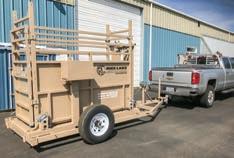




Established in 1959, Scales NW offers a wide range of equipment, from precision lab balances to high capacity rail scales, as well as certified scale service and installation.

In 1989, the University of Idaho established a fundraising program by the College of Agricultural & Life Sciences and Vandal Athletics to work with beef producers of Idaho in an effort to achieve 3 objectives :
Emphasize & advance the strong relationship between the University and the entire Idaho beef cattle industry

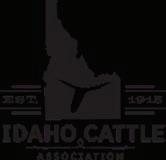
To provide the U of I College of Agricultural & Life Sciences with an expanded source of funds for scholarship & research supporting the beef industry
To provide an expanded source of funds in support of athletic programs at U of I, as well as student scholarships/research in the College of Agricultural & Life Sciences


Taylor L. Dixon Kuna, Idaho
Hadley Ann Dotts Deer Park, Washington
Samuel Cahill Kerner Weiser, Idaho
Kristie Marjatta McGourin Spangle, Washington
Jayden K. Mink Cambridge, Idaho
Elisha A. Wade Moses Lake, Washington
Audrey Ziegenfuss Star, Idaho
Tayler F Michel Kuna, Idaho
Art & Stacy Butler
Bo Clark
Brantley Hatch
Brett Barfuss
Brian Kossman
Broken Bar Land & Cattle
Cameron Williams
Carl Hatch
Carmen & Ben Stevens
Chet Nichols
Cody Barfuss
Crae Williams
Craig Simons
Dan & Lisa Stephenson
Denis Matthews
Denver Hawkes
Don Pape
Don Scarrow
Don Taber
Dr. Bob Monroe
Ernie Robinson
Gale & Pauline Neal
George Presley
Glen Christiansen
Grant Simons
Greg & Rita Hall
Gwenna Prescott
Jace Hall
Jayson Hatch
Jess Showell
John & David Banks
John & Reta Sutton
Karl Loveland
Kevin McLain
Kirk Nielsen
Lake Family Ranches, Inc.
Lance Westmoreland
Layne Hamilton
Lee Muench
Leo Baptiste
Lester Barfuss
Lowell Cerise
Marianne Josephson
Marie Judge
Mark & Wendy Pratt
Matt & Denise Tubbs
Matt & Sarah Thomson
Phillip Obendorf
Ralph Wheatley
Rhitt Hamilton
Rodney Peightal
Roger W. Clark
Ron L. Anderson
RonDell Skidmore
Roscoe Lake
Roxie Holsten
Roy Neal
Russ Stoddard
Russell K. Boyer
Rusty Nye
Sara Somsen-Fowler
Scott & Eric Bedke
Shane Hamilton
Shawn Oleson
Shryl Simons
Stephen J. Blaser
Stephen Shiner
Steve Runyan
Terry McNellis
Tim & Jennifer Keller
Todd Holbrook
Tom Seid
Tony Holsten
Ty Reeder
Vard Neal
Wade & Gwenna Prescott
Wade Greig
Wayne & Julie Burkhardt
Wayne Perkins
Wyatt Greig
126.22 +/-ACRES–Canyon Rim Develop ment Ground Twin Falls- $5,500,000
892.86 +/- ACRES –Weiser- $1,427,000
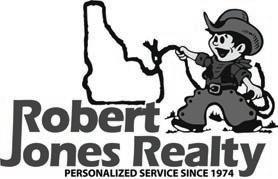
3.91 +/- Acres-Industrial Grain Mill – With Railroad Spur Twin Falls- $1,650,000 *SOLD*
86.16 +/- Acres– 1022 CAFO/Feedlot Buhl- $2,550,000
2.38 +/- Acres–Kimberly- $2,500,000
KODY
Northwest
Cell: 509.948.6430


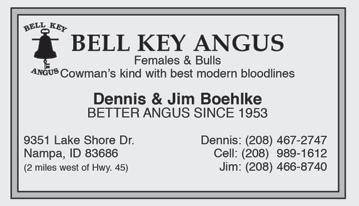
Office: 800.989.8247
Email: kodydeewilliams@allflexusa.com



P.O.
PRIVATE
2
Check
JBB/AL

